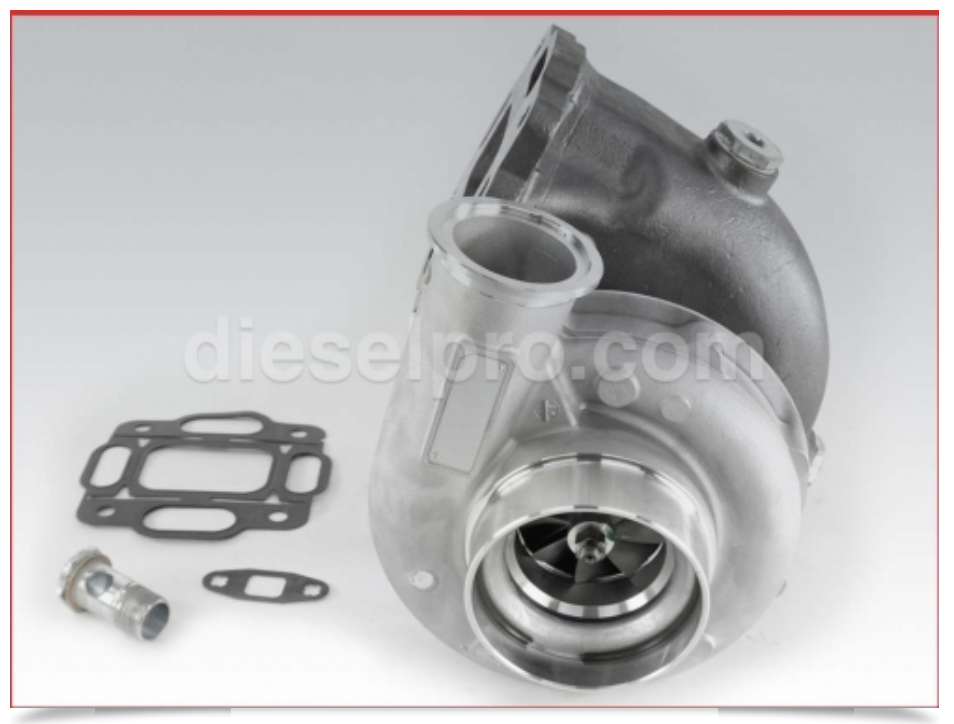
Introduction: What is a Turbocharger & How Does it Work for Cummins Engines?
A turbocharger is a device that increases the amount of air and fuel that an engine can burn, by forcing more air into the engine’s combustion chamber. In the case of Cummins engines, a turbocharger is used to increase the engine’s power output and efficiency. The turbocharger compresses air before it enters the engine’s cylinders, allowing more fuel to be burned and increasing the engine’s power. This is accomplished by using exhaust gasses to spin a turbine, which in turn forces more air into the engine’s cylinders. The increased power produced by the turbocharged engine leads to improved fuel efficiency and better performance.
The Advantages of Using Turbo Chargers with Cummins Engines
Increased Power Output
The primary advantage of using a turbocharger with Cummins engines is increased power output. By using a turbocharger, the engine can draw in more air and fuel, increasing the amount of power it can produce. This increase in power can be used to do more work with the same engine or to reduce the size of the engine needed for a particular job. However, adding a turbo to a non-turbo engine is not a simple task, as several critical engine components will need to be changed to handle the increase in horsepower. For example, the engine would need to be overhauled with completely new components.
How to Select the Right Turbocharger for Your Cummins Engine
Determine the type of Cummins engine you have.
The first step in selecting the right turbocharger for your Cummins engine is to determine the type of Cummins engine you have. Cummins manufactures a variety of engines, including diesel and gasoline engines, and they come in different sizes and power ratings. Depending on the type of engine, you may need a different turbocharger.
Turbochargers for Cummins Marine Engines
- Turbochargers for Cummins 6BTA Marine Engine
- Turbochargers for Cummins 6CTA 8.3 Marine Engine
- Turbocharger for Cummins 4BT Marine Engine
- Turbochargers for Cummins 4BTA Marine Engine
- Turbochargers for Cummins 6BT Marine Engine
- Turbochargers for Cummins ISB 4.5 Marine Engine
- Turbochargers for Cummins ISB 5.9 Marine Engine
- Turbochargers for Cummins ISB 6.7 Marine Engine
- Turbochargers for Cummins QSB 4.5Marine Engine
- Turbochargers for Cummins QSB 5.9 Marine Engine
- Turbochargers for Cummins QSB 6.7 Marine Engine
- Turbochargers for Cummins 6CT 8.3 Marine Engine
- Turbochargers for Cummins ISC 8.3 Marine Engine
- Turbochargers for Cummins QSC 8.3 Marine Engine
- Turbochargers for Cummins L10 Marine Engine
- Turbochargers for Cummins ISL Marine Engine
- Turbochargers for Cummins QSL Marine Engine
- Turbochargers for Cummins M11 Marine Engine
- Turbochargers for Cummins ISM Marine Engine
- Turbochargers for Cummins QSM Marine Engine
- Turbochargers for Cummins NT855 Marine Engine
- Turbochargers for Cummins N14 Marine Engine
- Turbochargers for Cummins ISX Single Cam Marine Engine
- Turbochargers for Cummins ISX Dual Cam Marine Engine
- Turbochargers for Cummins ISX Single Cam Marine Engine
Common Problems with Turbochargers & How to Troubleshoot them
Wastegate and Boost Leaks
Wastegate leaks and boost leaks are the most common issues with turbochargers. These leaks can cause a decrease in performance, an increase in exhaust temperatures, and a decrease in fuel economy. To troubleshoot these issues, check all clamping surfaces and hoses connecting the turbocharger to the engine for any signs of leakage or wear.
Overheating
Overheating can be caused by a lack of airflow through the turbocharger or an issue with the turbocharger’s wastegate actuator. If the turbocharger is not receiving enough air, it will be unable to cool its hot exhaust gas as it exits the turbocharger and will overheat. The wastegate actuator can also cause an overheat issue if it fails to close properly, causing a surge of exhaust gas that flows back into the compressor housing through the turbine and intercooler before exiting at full speed, resulting in an engine fire or damage to nearby components.



 Free US Calls: 1-888-433-4735
Free US Calls: 1-888-433-4735 International: 305-545-5588
International: 305-545-5588